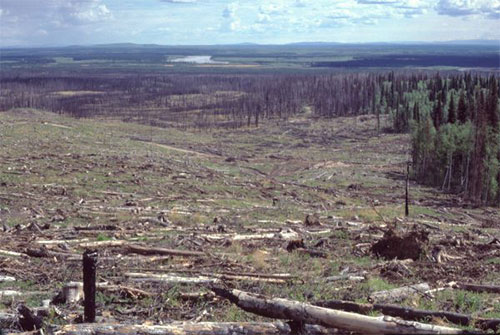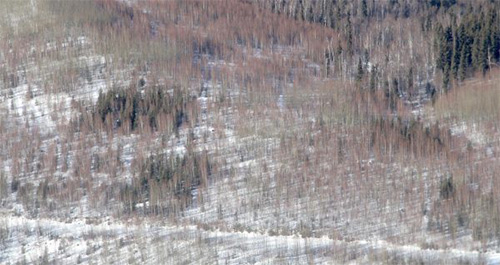
Forest regeneration experiment of 30 years yields resultsBy DEBBIE CARTER
September 13, 2017
The experiment, launched by three Fairbanks scientists, looked at different combinations of ground treatments to reduce competition from other vegetation. It also tested regeneration methods, such as planting spruce seedlings and broadcast seeding. The results, published Aug. 19 in the journal Forest Ecology and Management, showed that planting white spruce seedlings is the best way to produce a spruce-dominated stand after 28 years. Broadcast seeding was the next most effective method. The two options were the most expensive among those tested.
University of Alaska Fairbanks forest ecologist Glenn Juday, who helped establish the experiment in the mid-1980s and is a co-author of the paper, said the research shows the environmental and management situations in which different techniques work best and the situations in which they are unnecessary or even counterproductive. Juday was a young professor in 1983 when fire swept through the Tanana Valley State Forest southwest of Fairbanks, burning 8,600 acres. The Rosie Creek Fire, whipped by wind, burned into a section of the forest known as the Bonanza Creek Experimental Forest. Juday and two other scientists, John Zasada and Roseann Densmore, realized the fire provided a perfect setting for a forest regeneration experiment. They wanted to test which methods worked best to establish white spruce. White spruce is the Interior’s most valuable commercial species but also the most difficult to re-establish, said Juday. Other species, such as birch, establish or resprout readily, grow faster and compete with spruce. “Regenerating white spruce is our biggest challenge,” he said. The researchers established a 66-acre treatment area in 1985. The plots received one of four different types of ground treatments to reduce competing vegetation and five different white spruce regeneration treatments, including planting seedlings and broadcast seeding. Some control plots were left to regenerate naturally. The first results from the research were published in a 1999 article that concluded adequate numbers of spruce were established in most treatments. In 2010, Juday took an aerial photograph that showed more definitively how the treatments had worked. “After another decade, it was a lot more obvious who the winners and losers were,” he said. In 2013 and 2014, while earning a master’s degree in natural resources management, Andrew Allaby worked with Juday to design a project that would re-examine the type of trees and the total growth in the plots. Brian Young, who worked for the Alaska Division of Forestry and had just completed his doctorate at UAF, helped with the analysis of the data and on the paper.
Their research shows that white spruce basal area in the planted seedling plots was six times greater than in the naturally regenerated plots, and the number of white spruce stems in broadcast-seeded plots was three times greater. When the regeneration experiment began, Juday said, producing large white spruce was the primary goal of forest managers. Now some forest landowners want wood of any type for biomass energy. The regeneration installation provided useful information for them as well. The ground-clearing treatments did not have a significant effect on the spruce regeneration, but they did increase the size and density of birch trees. Juday is excited about the research, which was supported by a state capital appropriation. The Alaska Constitution requires a sustained yield on forestlands, and the study helps confirm that the state’s reforestation practices satisfy that goal, Juday said. This study and a recent long-term study by another graduate student, Miho Morimoto, have directly examined the regeneration of harvested forestlands, he noted. “We’ve got much more evidence now that the regeneration practices have worked,” Juday said. A science and technical committee established by the Division of Forestry used the new information and research from the Bonanza Creek Long-Term Ecological Research site to revise state reforestation standards. Allaby, the lead author on the paper, received his master’s degree in 2016 and works for the Division of Forestry. Young, who earned his doctorate in natural resources management in 2013, is an assistant professor at Landmark College in Vermont. Juday retired from the university in 2014 but continues with his research.
Representations of fact and opinions in comments posted are solely those of the individual posters and do not represent the opinions of Sitnews.
|
|||||

